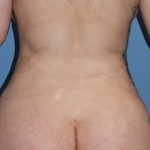Midfacial Implants – Different Styles for Cheek, Orbital, and Maxillary Augmentation
Facial implants are a common and assured method of building out skeletally deficient areas such as the chin, cheeks, and jaw angles. While many are aware of these popular locations for esthetic facial enhancement, there are many more implant styles and locations than most envision. This is particularly true in the midfacial area. The Read More…


